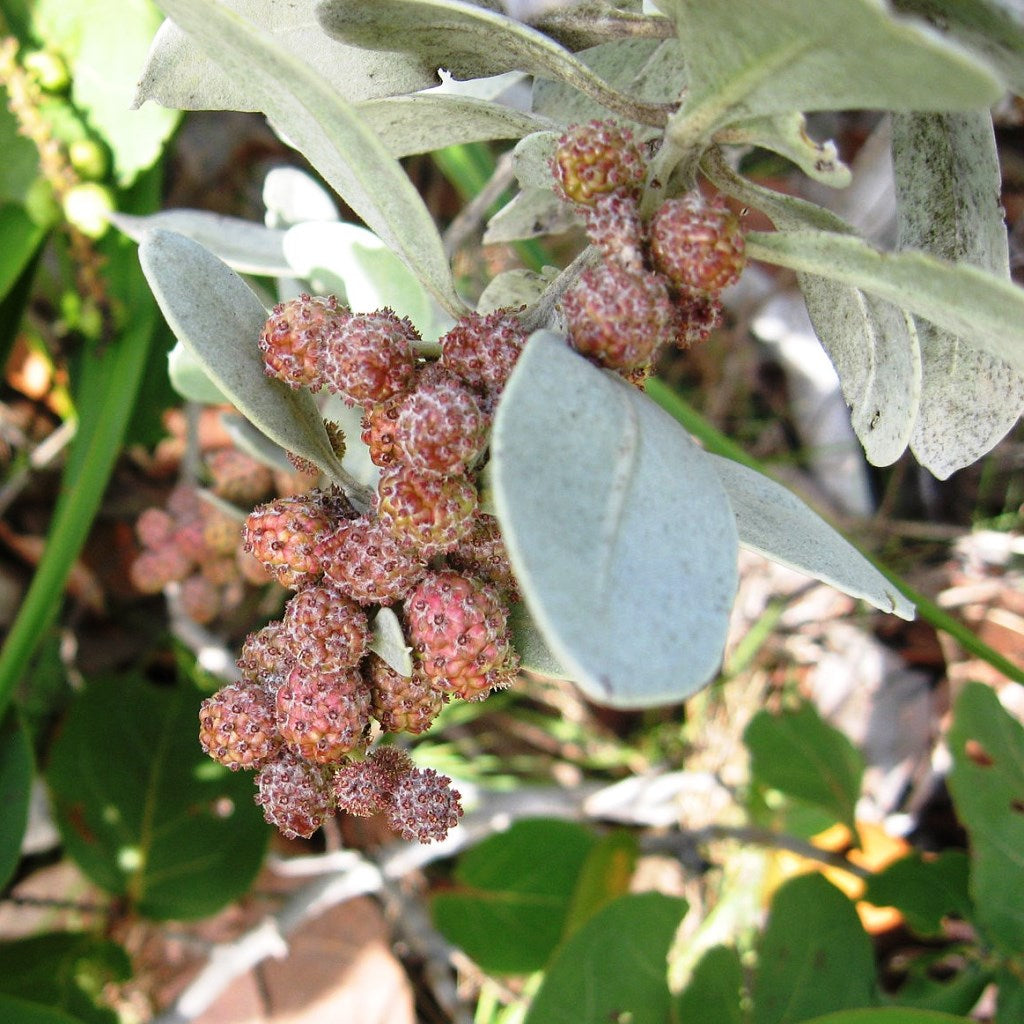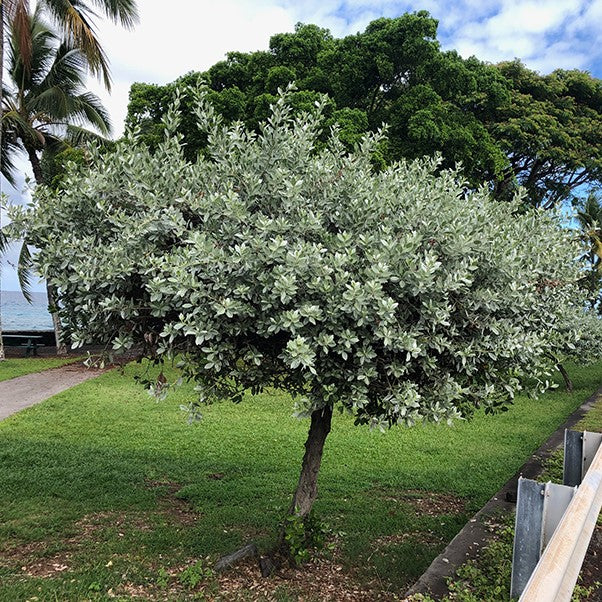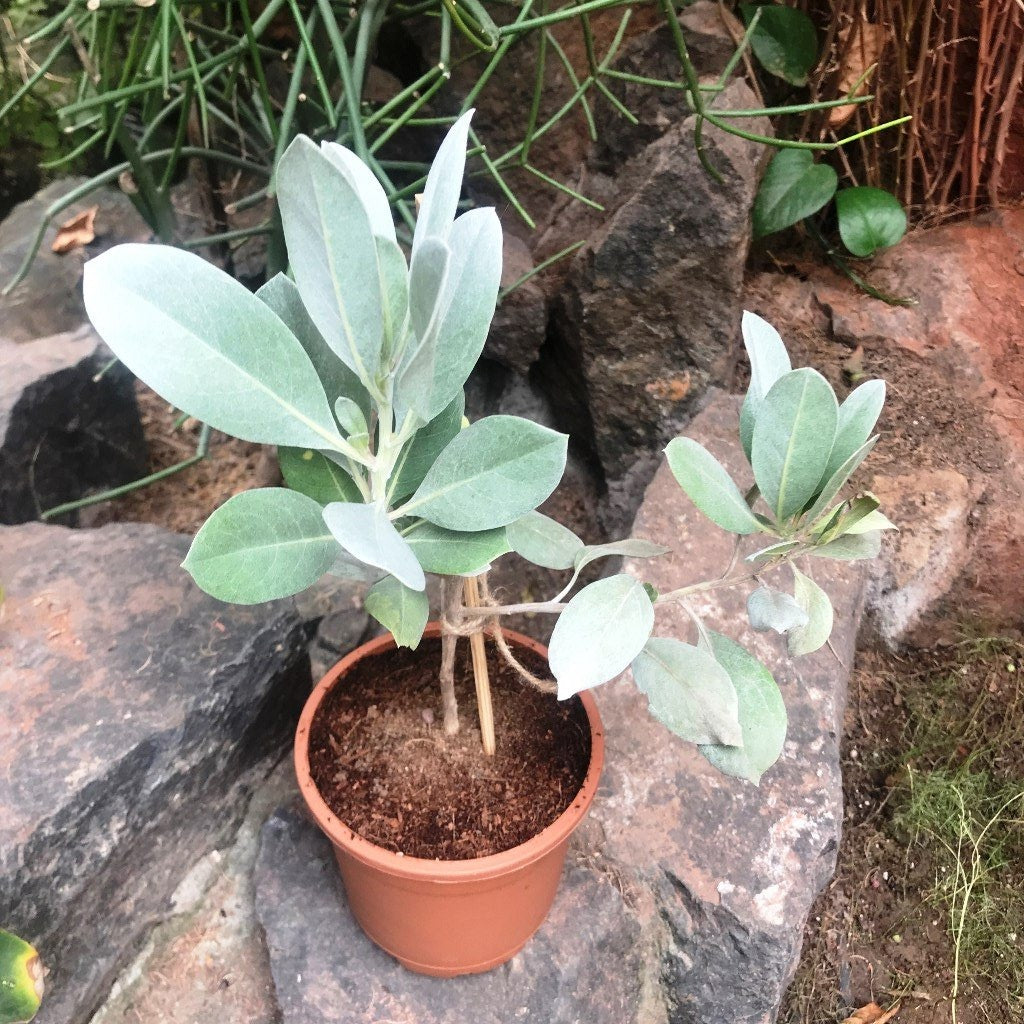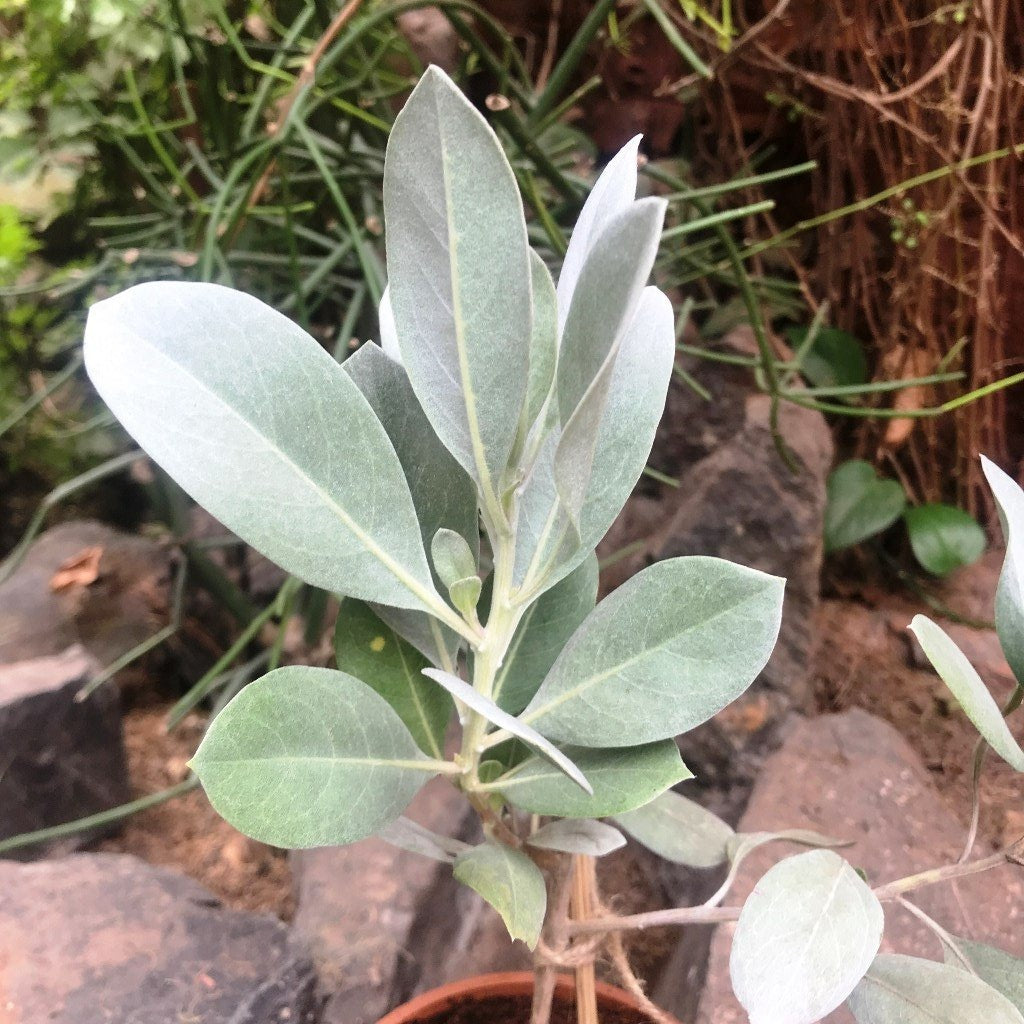Conocarpus erectus var. sericeus
Family
Combretaceae
Origin
Central America
Description
Silver buttonwood has velvety-soft leaves dusted with silvery-gray color and makes a stunning hedge, accent or small tree. This species can form dense, multi-trunked, shrubby thickets or grow as a tree up to 20m in height. The bark is thick and has broad plates of thin scales which are gray to brown.
The leaves are alternately arranged, simple and oblong, 2–7 cm long and 1–3 cm broad, with a tapering tip and an entire margin. They are dark green and shiny on top, and paler with fine silky hairs underneath, and have two salt glands at the base of each leaf.
Silver buttonwood has rounded flower heads covered in tiny, whitish florets that are said to smell intensely of artificial grape! Cute as a button, the maroon-tinged, conical, button-like fruit clusters give the genus both their botanical name: Conocarpus means ‘cone-like fruit,’ and their common name of 'buttonwood’.
Environment
Buttonwood often grows along shorelines, it is highly salt-resistant and can grow in tough conditions. The Silver Buttonwood also does well in sand and alkaline soils that are periodically inundated with freshwater or brackish water to moderately well-drained soils
These plants are moderate to fast growers that prefer full to part sun. They'll grow in part shade, too, but won't be as full or as colorful.
Fertilize 3 times a year - in spring summer, and autumn - with a high-quality granular fertilizer.
You can trim to about 5 feet or let buttonwood grow to 10 feet for a hedge. As a small tree, expect a mature size of 20 feet unless you trim it smaller.
Landscape Uses
Buttonwood can be used as wind breaks in landscape and also to provide light shade. This plant is salt tolerant it's perfectly suited for coastal landscapes. These plants are especially effective when planted in combination with red, pink, purple, blue and white flowering plants. They can function as clipped hedge shrubs or left to grow in a more natural shape.















